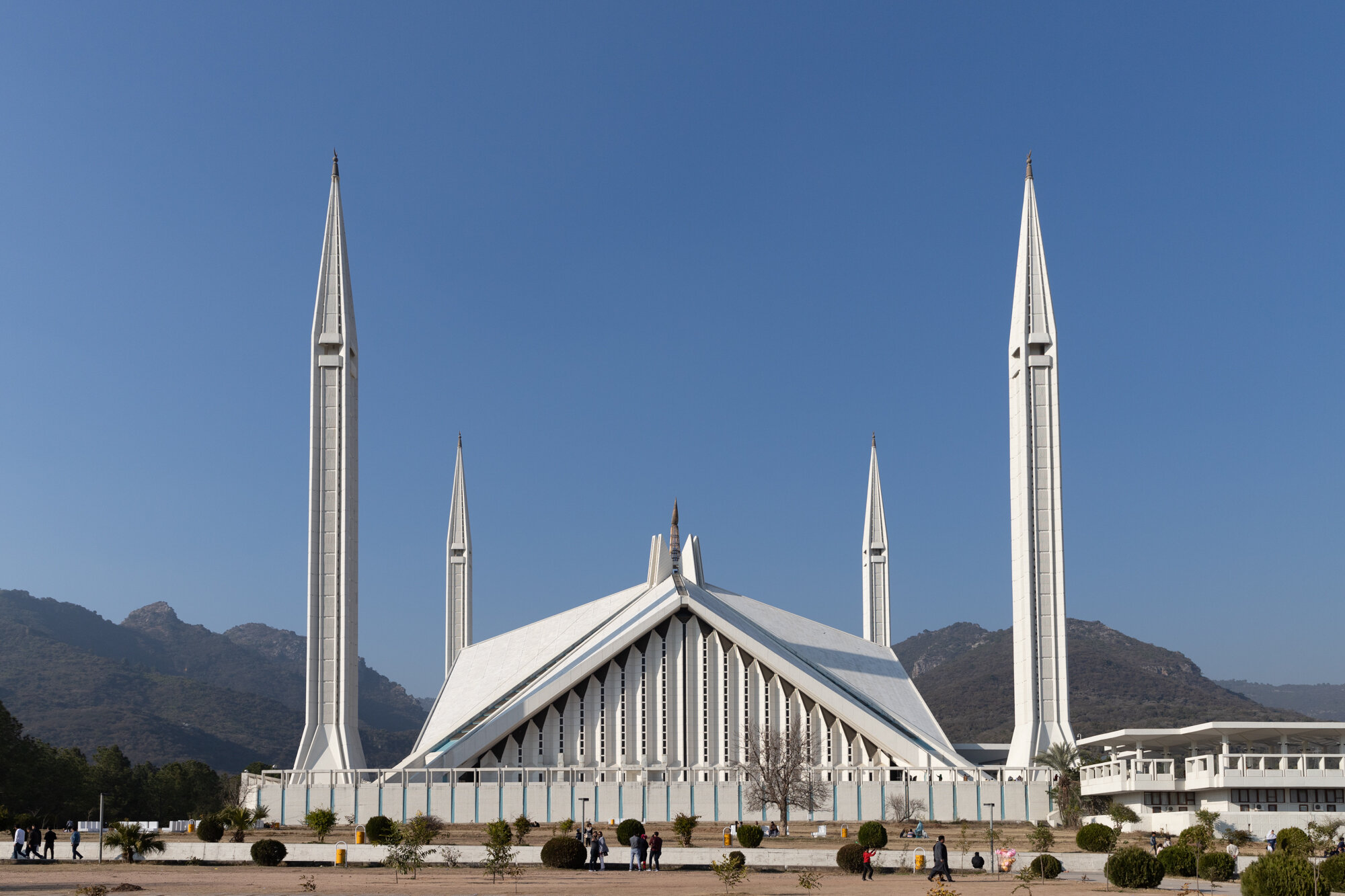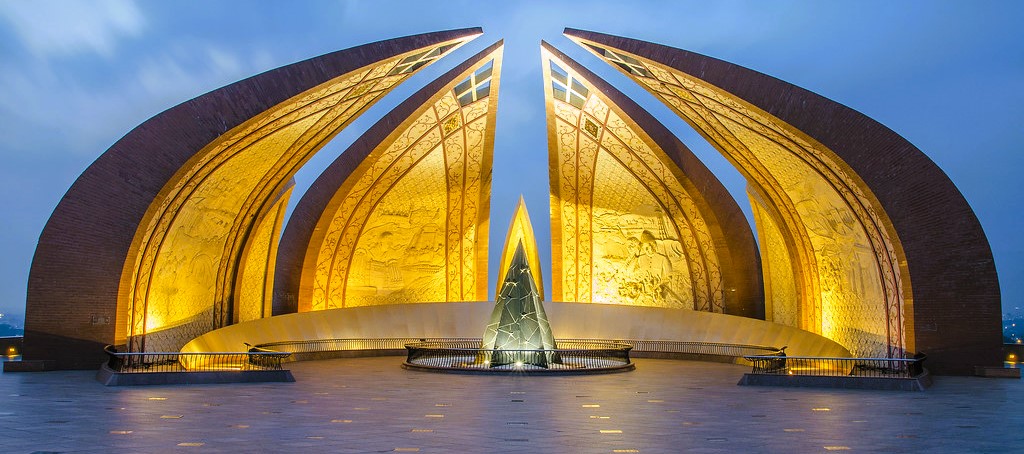In Foundations of Freedom blog, we explored how Pakistan was built on ambition, faith, and the dream of self-determination. In this second installment, we explore how national architecture became a living expression of that dream, forming the visible soul of a young and determined nation.
Foundations of a New Identity
When Pakistan emerged on the map in 1947, it wasn’t just claiming a geography—it was asserting an idea. A new Muslim state needed symbols to represent its values, aspirations, and unity. In this formative era, architecture became a crucial tool. Every minaret, dome, arch, and corridor built in those early years carried more than function—it carried meaning. These structures were meant to anchor a national identity, inspire citizens, and declare Pakistan’s place on the world stage.
Minar-e-Pakistan: The Tower of Resolve
Standing in the heart of Iqbal Park, Lahore, Minar-e-Pakistan is among the most iconic national monuments. Constructed between 1960 and 1968, this 70-meter-high minaret marks the very ground where the Lahore Resolution was passed on March 23, 1940—a defining moment in the creation of Pakistan.

Designed by Nasreddin Murat-Khan, a Russian-born Pakistani architect, the structure beautifully blends Islamic, Mughal, and modern architectural styles. Its base is shaped like a flower petal, rising into a spiraling tower that transitions from rough stone to polished marble—a metaphor for Pakistan’s journey from struggle to refinement.
Inscriptions of the Lahore Resolution, Quranic verses, and excerpts from key historical speeches reinforce the tower’s symbolic power. It is not merely a tribute to the past but a national declaration in concrete, asserting identity, purpose, and unity.
Faisal Mosque: A Modernist Masterpiece
Perched at the foothills of Islamabad’s Margalla Hills, the Faisal Mosque is one of the largest and most unique mosques in the world. Completed in 1986 and named after King Faisal of Saudi Arabia, who funded its construction, the mosque redefined Islamic architecture in the region.
Designed by Turkish architect Vedat Dalokay, the structure deviates sharply from traditional South Asian mosque designs. There are no domes, no minarets in the usual form—only four pointed spires and a triangular, tent-like roof that mirrors the peaks of the Margallas.

The minimalist and geometric design is a deliberate attempt to fuse modernism with Islamic spirituality. Inside, the spacious prayer hall is free of columns, allowing uninterrupted space for thousands of worshippers. From afar, it appears as a monumental tent in silent prayer—at once humble and majestic.
Faisal Mosque doesn’t just function as a house of worship—it stands as a beacon of Pakistan’s forward-looking identity, where faith meets innovation.
Badshahi Mosque: Legacy of the Mughals
Constructed in 1673 by Mughal Emperor Aurangzeb, Badshahi Mosque in Lahore is one of the most magnificent examples of Mughal architecture in the world. Though it predates Pakistan by centuries, it has become an enduring symbol of spiritual and cultural pride.
Built entirely in red sandstone with white marble inlay, the mosque can accommodate over 55,000 worshippers, making it one of the largest mosques globally. Its grandeur lies in its symmetrical design, massive domes, and towering minarets that frame Lahore’s skyline.

The inner courtyard, with its sprawling marble floor, reflects the discipline and grandeur of Mughal aesthetics. Yet, its function remains simple: a sanctuary for prayer, unity, and reflection.
Badshahi Mosque represents the deep historical roots of Islam in the subcontinent, and in the modern era, it has become a reminder that Pakistan’s identity is not new—it is the continuation of a much older civilizational legacy.
Noor Mahal: Royal Elegance in the Desert
Located in Bahawalpur, the Noor Mahal is a lesser-known but equally stunning architectural jewel. Built in 1872 during British rule by the Nawab of Bahawalpur, this palace draws heavily on Italian and neoclassical styles, with columns, verandas, and expansive halls.

Despite its European aesthetic, the palace was intended for the Nawab’s family and represents the fusion of Eastern luxury with Western elegance. With over 30 rooms, underground chambers, and a ballroom, the structure showcases the prosperity of the princely state at its peak.
Today, Noor Mahal is managed by the Pakistan Army and remains open to the public. Its beauty lies not only in its architectural finesse but in the fact that it narrates a time when Bahawalpur stood as a center of art, culture, and refinement.
Derawar Fort: Fortress of the Desert
Towering over the Cholistan Desert like a mirage, Derawar Fort is one of the most dramatic and awe-inspiring historical structures in Pakistan. Believed to have been originally built in the 9th century and later reconstructed by the Abbasi rulers, the fort comprises forty massive bastions that rise over 30 meters high and span more than 1.5 kilometers in circumference.

Its remote location and towering presence evoke a sense of ancient mystery. Derawar was a strategic military and trade post, guarding the caravan routes that once crossed the desert. The thick sandstone walls served as both defense and status symbol for the Nawabs of Bahawalpur.
Today, despite its deteriorating condition, Derawar Fort is a national treasure—a physical link to the frontier spirit and resilience of Pakistan’s desert cultures.
Fort Munro: Colonial Charm in the Highlands
Nestled in the Sulaiman Range of southern Punjab, Fort Munro offers a very different kind of architectural narrative. Named after British Colonel Munro in the late 19th century, it was developed as a hill station for British officials seeking respite from the summer heat.

Colonial-era bungalows, rest houses, and administrative buildings still dot the landscape, creating an atmosphere of quiet charm. The architecture here is simple yet strategic, focused on climatic comfort and functionality.
What makes Fort Munro unique is its role in bringing development to the Dera Ghazi Khan region and how it blends colonial utility with natural beauty. It reminds us that architectural heritage can also exist in modesty, not just grandeur.
Frere Hall: Venice in Karachi
In the bustling heart of Karachi, Frere Hall stands as a testament to colonial-era design and civic pride. Built in 1865, it is designed in the Venetian Gothic style, featuring pointed arches, ribbed vaults, and lancet windows that wouldn’t be out of place in Renaissance Europe.

Originally built as a town hall during British rule, Frere Hall has evolved into a cultural center, housing an art gallery, library, and public gardens. Its interior ceilings are adorned with murals by Sadequain, one of Pakistan’s most celebrated artists, further enriching its cultural value.
Frere Hall is not just a relic of the past—it is a living institution, blending artistic expression, historical memory, and urban vitality.
Pakistan Monument: Unity in Stone
One of the newer additions to Pakistan’s architectural landscape, the Pakistan Monument in Islamabad was inaugurated in 2007 as a tribute to the sacrifices made during the independence movement.

Designed by architect Arif Masood, the structure resembles a blooming flower, with four large petals representing Punjab, Sindh, Khyber Pakhtunkhwa, and Balochistan, and three smaller petals symbolizing the country’s minority regions. At its base, a museum showcases key moments from the country’s struggle for freedom.
The Pakistan Monument is a symbol of national unity and inclusivity, reminding visitors that Pakistan is not a monolith, but a mosaic of cultures, histories, and dreams.
A Nation Built in Stone and Spirit
Pakistan’s architecture tells a story that no textbook can fully capture. From the regal grace of Noor Mahal to the modern elegance of Faisal Mosque, and from fortresses in deserts to colonial halls by the sea, these buildings are our silent storytellers.
They hold within them our history, diversity, and aspirations. And as we mark another Independence Day, we honor not just the leaders and movements—but also the architects, artisans, and visionaries who built the soul of Pakistan in stone.

